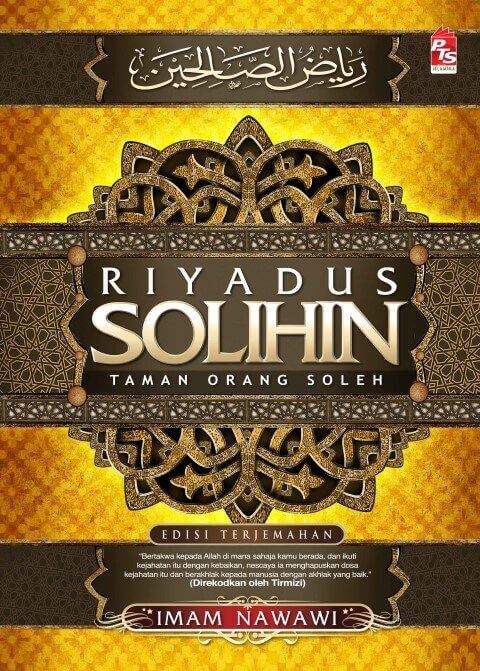HISTORICALLY,
the development of sewerage services in Malaysia was mainly driven by local
authorities to meet the basic sanitation needs of the public.
With the
federalisation of sewerage services in 1994, Indah Water Konsortium (IWK)
together with the governing agencies had overseen the realization of modern and
efficient sewerage treatment system in Malaysia for the past 16 years.
With almost 100
per cent sanitation coverage nationwide to date, Malaysia is considered by our
regional counterparts as a success model.
Modern
mechanised treatment technologies predominates most of our urban landscape,
which ensures that sewage is treated before the effluent is released back into
our receiving water bodies.
These systems
not only safeguard public health but also provide a green and healthy
environment. The modern systems we enjoy today have evolved through scientific
research and technological development.
The continual
improvement and modernisation of municipal sanitation services have led to the
present day sewerage network and mechanised as well as automated treatment
systems.
IWK's R&D
programme
Being cognizant
of R&D's role in transforming the landscape of the sewerage industry, IWK's
journey thus far encompasses a spectrum of research initiatives ranging from
studies on collections systems, optimisation of sewage treatment performance,
sewage sludge treatment, sewage by-products recovery and reuse of sewage such
as bio-effluent and bio solids.
Its journey
started with structured R&D collaborations with local research institutions
and this formed IWK's core programme.
This was
complemented with pilot trials of new technologies, in-house studies and
research projects by university students.
Structured
R&D with local research institutions are mainly funded by IWK, whilst
leveraging on the local research institution's niche expertise to address key
needs of improving sewage and sludge treatment along with reuse potentials over
the long term.
Pilot trials
were focused on the assessment of new or emerging technologies, which included
testing of vendors' claims to investigations for technology adaptation or
modification for local adoption.
IWK's in-house
studies typically included desktop studies and lab experiments for exploratory
and troubleshooting purposes. In addition, IWK facilitated university research
students in terms of facilities, expertise and experience.
This is keeping
in line with IWK's aspiration to promote local research and develop a Malaysian
R&D Centre for sewerage services.
R&D focus
areas
Traditionally,
the focus of R&D was limited to developing technologies that ensured sewage
treatment plants' final effluent met regulatory discharge limits as well as
solutions to operational issues.
Presently, due
to complex environmental challenges of climate, a water sensitive future and
along with the need for sustainable sewerage business, research has now
expanded to include green technology applications.
This includes
resource recovery (by products reuse and nutrient recovery), renewable energy
production as well as eco-friendly systems where biotechnology and
nanotechnology will play a key role.
From the point
of sewage collection to treatment and final disposal, the R&D focus for the
sewerage sector over the years falls into four major key areas namely
collection system, sewage treatment system performance, wastewater reuse and
sludge management.
R&D in
collection system
Sewage
collection systems mainly comprise a network of pipelines, manholes, pumping
stat ions or force mains to collect and transport sewage from residential,
commercial and industrial buildings to sewage treatment facilities.
Collaborative
research with Universiti Teknologi Malaysia (UTM) on fundamental subjects such
as determination of per capita sewage load and inflow and infiltration in
sewerage pipeline were conducted.
The former
provided actual sewage load (quantity and strength) in a local catchment.
Actual flow rate was measured at 202L/ PE.day (202 litres per population
equivalent daily) as compared to the design standard of 225L/PE.day, whilst
organic loading was found at BOD (biochemical oxygen demand) of 45g/PE.day (45
grammes per population equivalent daily) compared to design values of
55g/PE.day and SS (suspended solids) was detected at 20g/PE.day compared to
68g/ PE.day as recommended by the Malaysian Standard (MS1228).
These findings
provided an insight on engineering design values and led to further data
collection at other localities in Malaysia.
Similarly the
study on inflow and infiltration in sewerage system provided scientific data to
support engineering design.
Infiltration was
found to be as low as 88L/day/km/mm diameter and as high as 4700L/day/km/ mm
diameter, whilst leakage from the sewers can reach 8000L/day/ km/mm diameter
and peak flow factor was measured at 2.3 much lower than the MS1228 value of
4.7 per cent.
Following these
results, data from varying catchments and sewer systems will be continually col
lected to determine the appropriate design value for Malaysian conditions.
Moving on from
such fundamental studies, R&D into biotechnology solutions is being
explored. Some studies being explored include those to investigate the
potential of enzyme and microbe applications to resolve sewer blockages due to
fat, oil and grease (a common problem in Malaysia), as well as in-pipe
treatment innovations that use microbes to treat sewage in the sewer and thus
lowering the pollutant loads that end up in the sewage treatment plant.
Nanotechnology applications for sewer materials are being investigated on
corrosion resistant and other areas of interest.
R&D in
sewage treatment system
R&D studies
on low cost innovations to improve and upgrade older treatment facilities
include testing efficacy of chemical agents to enhance pollutant settling out
and removal at communal septic tanks, bio- augmentation at oxidation ponds and
using of bio-media to improve pollutant removal at Imhoff Tanks (IT).
It was found
that chemical agents were able to improve coagulation and settling for the
Communal Septic Tanks (CST) thus reducing SS and certain proportion of
biochemical oxygen demand (BOD) and chemical oxygen demand (COD), whereby
innovations into efficient dosing to realise economical chemical usage helped
improve the systems.
Study on the use
of biochemical and/or biological products at oxidation ponds, such as enzymes
and microbes by UTM showed results that SS, COD, BOD, oil and grease as well as
nutrients had been reduced by 15 per cent to 35 per cent.
Using media in a
tank system to increase the surface area for microbial degradation was a
concept proven to work in a collaborative study with UPM.
The study showed
that media could improve removal by 20 to 30 per cent with less clogging
problems compared to older IT media aggregates. Longer term monitoring studies
on the system's desludging needs, efficacy over time and adaptation into
nutrient recovery model is being pursued.
Beyond upgrading
old systems to meet environmental standards, the current predominance of modern
mechanised systems across the country has raised the need for energy saving
innovations.
The quantum of
electrical energy consumed by more than 4,500 of such facilities nationwide
gives opportunity to innovate for energy saving solutions.
In this regard,
bio-technology is being explored as a new alternative for treatment process
improvements where microbial products could be developed to enhance the
treatment systems capability.
As of late,
eco-friendly treatment systems are being explored whereby sewage treatment will
need less space, produce less sludge and require lower energy whilst purifying
the sewage before the effluent is released back into clean water.
The latest being
a variation of sequencing batch reactors (SBR), moving bed bioreactor (MBBR),
membrane bioreactor (MBR), combination of up-flow anaerobic sludge blanket
(UASB) and aerobic polishing.
Some examples of
on-going studies on eco-friendly systems are pilot trials of hybrid treatment
systems, which is a combination of bio-film (attached growth on media) and
activated sludge as well as pilot MBR systems at sewage treatment facilities in
the country.
"It is
envisaged that R&D will not only realise the variation of pilot
eco-friendly systems in Malaysia but in the long term, the zero-waste concept
will be demonstrated on a pilot scale whereby sewage treatment will be
transformed into a resource recovery process with zero waste stream", says
Datuk Ir Abdul Kadir, Chief Executive Officer of Indah Water Konsortium.
R&D in
wastewater reuse
Currently,
nationwide sewage treatment plants on aggregate produce 4,000 MLD of treated
effluent that can be tapped for industrial cleaning purposes, agriculture,
recreation, industrialplant cooling and recharge of groundwater.
This will
greatly relieve water stress areas and contribute towards sustainable water
resources. Previous R&D collaborative study between IWK and UTM established
the benefits of treated sewage effluent (bio-effluent) reuse in landscaping and
for industrial applications.
For industrial
applications, a study on using continuous submerged MF (CMF-S) followed by
reverse osmosis (RO) membrane for wastewater reclamation was implemented.
The results
showed that reclaimed water was suitable for industrial applications and
disinfection would be required to prevent post bacterial growth in post RO
piping. Although the results were encouraging, RO systems require high investment
and operational costs.
Thus, the tariff
for water reclamation needs to be looked into along with research for lower
cost filtration systems.
Additionally,
the potential of MBR systems are being explored to produce high quality
effluent with bacteria removal in combination with RO or down steam
disinfection as to the long term alternative to realise bio-effluent recycling.
Depending on the
applications, pre-commercialisation scale demonstration recycling technologies
units can now be investigated by local researchers.
Such projects
are in tandem with the country's green technology agenda as it will lower the
nation's water footprint.
R&D in sludge
reuse and management
Apart from
recycled water potential, R&D on sewage sludge provides the scientific data
for reuse of bio-solids (semi- solid dewatered form of sewage sludge) as
fertilisers or soils amendment material.
Presently,
domestic sewage treatment facilities in Malaysia generate approximately 200
tonnes a day of sewage sludge that is disposed to landfill.
This remains a
huge potential for resource recovery. Local research has shown that the typical
proportion of nitrogen (N):phosphorus (P): potassium (K) in bio-solids is 3 per
cent whilst organic matter constitutes more than 50 per cent of the bio-solids
and the presence of micronutrients such as calcium, magnesium and sulphur are
beneficial for plant growth.
Field trials in
collaboration with UPM on timber species, such as meranti tembaga, jelutong,
acasia, kayu manis and merawan showed significant growth in terms of height and
basal diameter whilst improving the soil Cation Exchange Equivalent (CEC).
The CEC was
found to increase to 22meq/100g soil compared to 7.4meq/100g soil at the
control plot. Research on rubber trees with UPM & RRIM (The Rubber Research
Institute of Malaysia) also showed that bio-solids were able to increase growth
rate and potential to double the wood yield. Additionally, UPM found that the
rubber wood quality to be suitable for furniture use.
Stabilisation
methods to further enhance the value of bio-solids were also explored and
ranges from traditional composting to vermi compos t ing us ing earthworms.
Composting
studies by UPM produced compost from sewage sludge that was comparable to
commercial chemical fertilisers in potted ornamental plants.
Whilst
vermicomposting study with MARDI (Malaysian Agr icul tural Research and
Development Institute) showed that sewage sludge can be transformed by
earthworms into valued added fertilisers.
Essentially by
realising biosolid reuse instead of disposal to landfills will reduce
greenhouse gas generation from the landfills.
This will
contribute positively to a lower carbon footprint overall. Based on the
research data collected, it would auger well to establish reuse guidelines for
Malaysia and precommercialisation demo scale plants can be carried out to
support Malaysia's Green Agenda.
Sewage sludge
being rich in organic material can also be converted into an energy source. It
can either be converted into methane gas (also known as biogas) as renewable
fuel source or transformed into other fuel material and then fired for energy.
Biogas generated
at IWK's facilities showed methane composition averaging 65 per cent whilst
analysis of typical biosolids from IWK plants in Malaysia showed the calorific
value ranging from 2500 to 4300 kcal/kg dry solids.
R&D on
social-environmental sewerage management development
In addition to
the four key R&D areas featured, there are other scopes being studied, for
instance R&D study between Universiti Kebangsaan Malaya (UKM) and IWK was
carried out to gauge the public's perception towards the reuse of bio-solids
and bioeffluent.
Most respondents
agreed with the reuse of bio-effluent for landscaping and industrial uses,
whilst most were amenable to biosolids for non-food crops. The acceptance rate
could be improved with educational and awareness tools. It is envisaged that
local research studies will also include matters relating to policies and
developmental strategies (for example, centralised versus de-centralised
systems) as well as other management aspects of sewerage development.
Future R&D
opportunities in a nutshell
Research and
development for improvements in sewerage sector is inextricably linked to
improving our environment for a sustainable future and it is envisaged that the
next phase of R&D studies will involve exploration of biotechnology and
nano-technology applications in wastewater treatment.

.png)















No comments :
Post a Comment